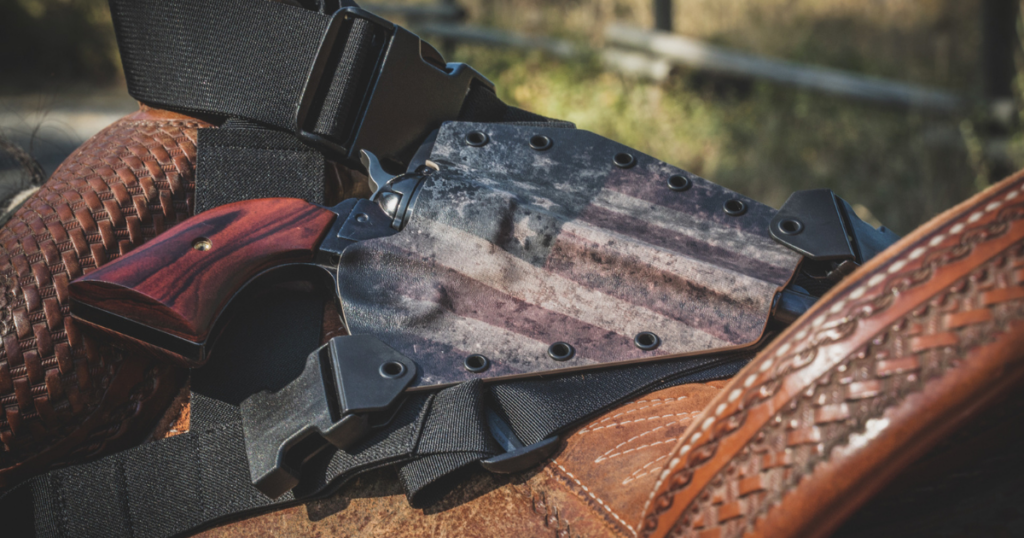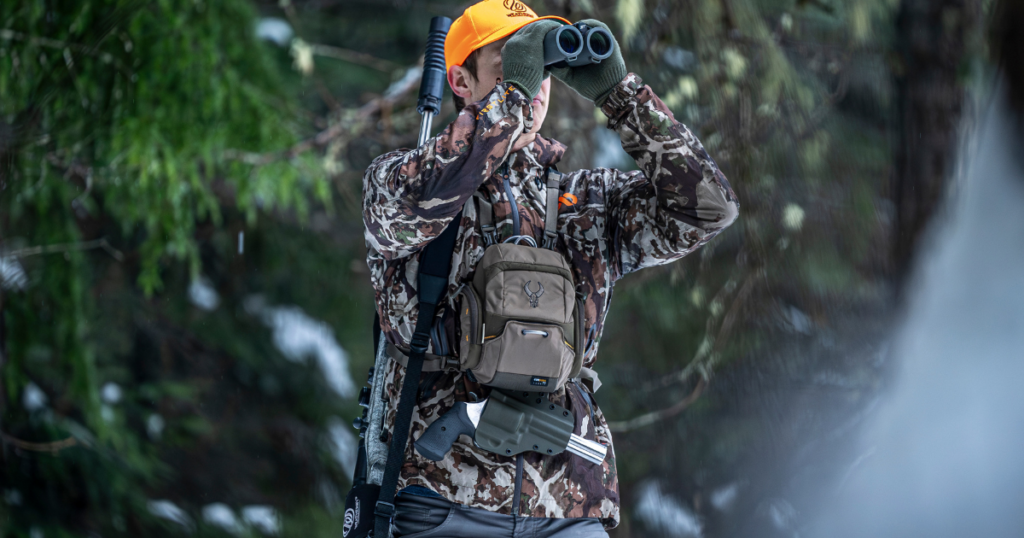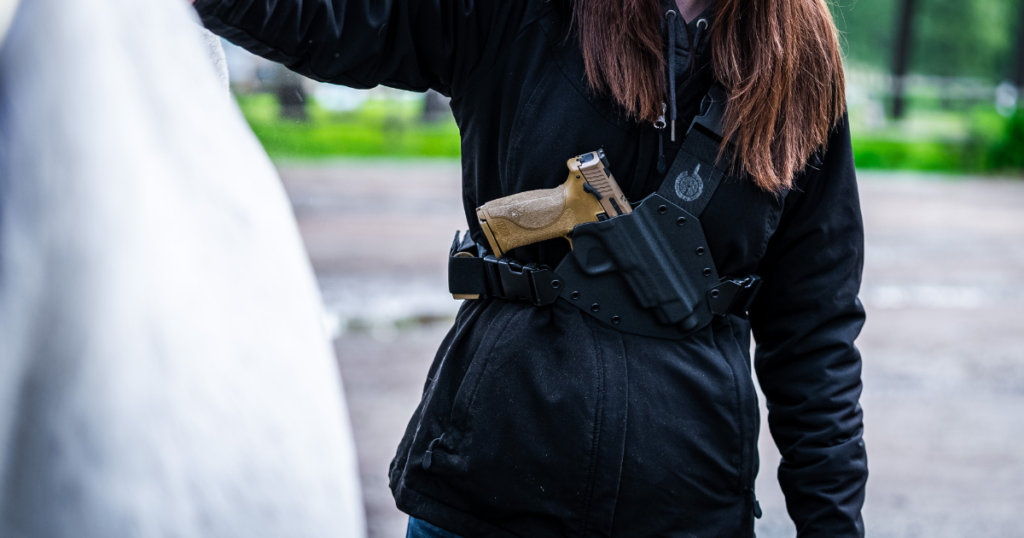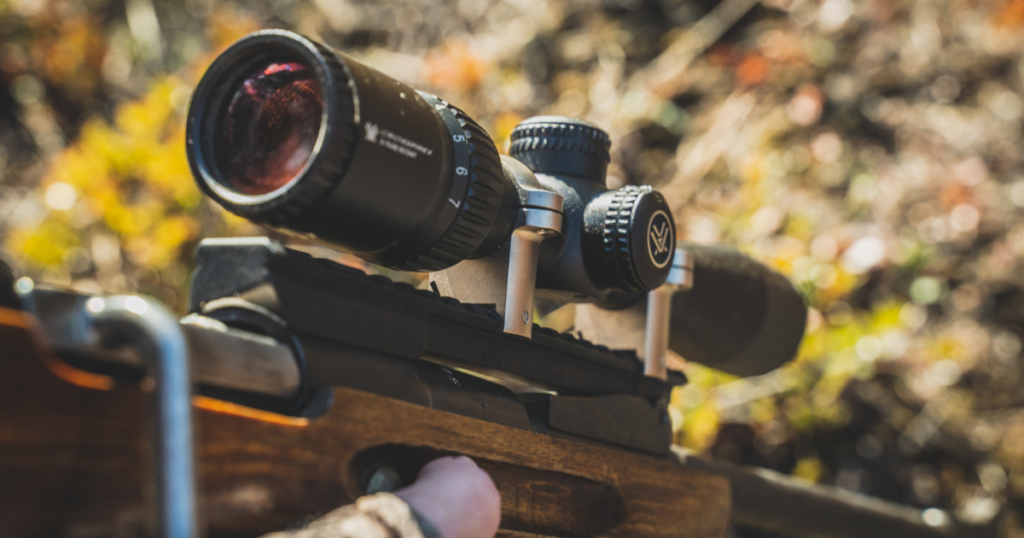Hunting on horseback is a time-honored tradition that combines the thrill of the chase with the deep bond between rider and horse. But successfully hunting on horseback requires more than just a love of the outdoors – it demands preparation, the right equipment, and a thorough understanding of your horse and the environment.
So, saddle up and dive into horseback hunting – where tradition meets adventure.
Qualities of a Good Hunting Horse
Before taking your horse hunting, it’s important to understand the qualities that make a good hunting horse for both your safety and success in the field. A good hunting horse should possess several key traits: temperament, stamina, and sure-footedness.
- Temperament: A horse with a calm and steady temperament is important. Hunting environments can be unpredictable, and a horse that remains composed under pressure will help you navigate challenges more effectively.
- Stamina: Hunting often involves long hours and extensive travel across difficult terrain. Your horse must have the endurance to keep up with these demands without showing fatigue.
- Sure-footedness: Another critical trait is the ability to cross challenging landscapes safely. A sure-footed horse can navigate rocky paths, steep inclines, and uneven ground.
Popular Breeds for Hunting
Certain horse breeds are particularly well-suited for hunting due to their traits and capabilities. Here are a few popular choices:
- Quarter Horses: Known for their versatility and strength, Quarter Horses excel in various terrains and can handle the physical demands of long hunting trips.
- Mustangs: Raised in the wild, Mustangs are inherently adept at navigating challenging landscapes and are renowned for their endurance and sure-footedness.
- Appaloosas: With a strong build, Appaloosas are highly capable hunting horses known for their stamina and calm temperament.
If your horse’s breed isn’t on the list, don’t count them out yet! Assess the qualities listed above to see if your horse is a good fit for hunting.
Training Your Horse for the Hunt
Preparing your horse for hunting involves more than basic training. Here are some steps to get your horse ready:
- Conditioning: Regular exercise builds your horse’s stamina and strength. Gradually increase the difficulty of your training sessions to mimic the conditions you’ll encounter during hunting.
- Desensitization to gunfire: A critical aspect of training is getting your horse accustomed to the sound of gunfire. Start by exposing your horse to the noise from a distance and gradually decrease the distance as they become more comfortable.
- Walk and shoot: Begin by walking your horse and practicing shooting at stationary targets. This drill helps both you and your horse get accustomed to the sensation of shooting while moving.
- Trotting and galloping: Progress to trotting and eventually galloping while shooting at targets. Focus on maintaining balance and accuracy despite the increased speed.
- Pack training: If your horse will be carrying gear, training them to handle the added weight and balance is essential. Start with light loads and gradually increase the weight as your horse becomes more accustomed.
- Obstacle training: Introduce your horse to various obstacles found in the wild, such as streams, fallen logs, and rocky paths. Then, navigate through the barriers and shoot at various points. This will help you become more confident and help your horse become more sure-footed.
If you’re new to carrying a gun on horseback, read A Guide to Carrying a Gun When Horseback Riding for more help!
Horseback Hunting Gear
The right gear is important for a successful and enjoyable horseback hunting trip. Here are some must-have items for both you and your horse.
Riding Saddle and Saddlebags
- Saddle types: A well-fitted, durable riding saddle is essential for hunting. Western saddles are often preferred for their strength and comfort during long rides. Check that your saddle is fitted correctly to avoid discomfort and injuries for both you and your horse.
- Saddlebags: High-quality saddlebags are important for carrying food, water, and hunting gear. Look for saddlebags made from durable materials like PVC-backed polyester, which are lightweight yet robust. Choose bags that are spacious enough to carry necessary items but not so large that they burden your horse.
Gun Holsters for Horseback Hunting

- Accessibility: Quick access to your firearm is crucial when hunting on horseback. A well-designed holster should allow you to draw your weapon swiftly without hindering your movement.
- Security: The holster must securely hold your firearm in place, even during rough rides. This is essential to prevent accidental loss or misfires.
- Comfort: Opt for holsters made from lightweight, durable materials that evenly distribute the weight of the firearm.
At GunfigthersINC, we designed our Kenai Chest Holster for backcountry activities like horseback hunting. It offers a secure fit that doesn’t restrict movement while keeping your firearm within easy reach.
For the Hunter
- Clothing: Dressing in layers allows you to adapt to changing weather conditions. Include waterproof gear and insulated clothing for colder environments for comfort and safety throughout your hunt.
- Hunting gear: Bring your weapon of choice, ample ammunition, and protective gear like ear and eye protection.
- Food and water: Pack enough food and water to sustain you throughout the day. Energy-rich snacks and hydration options are essential for maintaining your stamina in the field.
If you’re going bear hunting, read Essential Gear for Bear Hunting and Choosing the Right Firearm for Bear Hunting.
For the Horse
- Nutrition: Pack high-energy feed and snacks to fuel your horse throughout the hunt.
- Water: It’s also essential to bring a portable water source or collapsible buckets so your horse stays hydrated.
- Safety gear: Equip your horse with safety gear such as a horse blanket, hoof pick, and emergency farrier tools to address any issues during your hunt.
Additional Gear

- GPS app or unit: A reliable GPS unit or app is essential for keeping you on track and helping you find your way back to camp. The onX Hunt app is a powerful tool that provides GPS functionality and offers detailed maps, land boundaries, and waypoint tracking.
- First aid kits: A comprehensive kit is crucial for you and your horse. Include pain relievers, bandages, antiseptic wipes, and any necessary medications you or your horse may need.
- Binoculars: High-quality binoculars are indispensable for spotting games from a distance. Look for models with clear visuals and durable enough to withstand harsh conditions.
Our Bino-Link Binocular Holster is an excellent addition to your preferred binocular harness. This holster easily attaches to your existing setup, keeping your binoculars secure while allowing quick access to your gun during the hunt.
Read Carrying a Pistol with a Bino Harness for more on the Bino-Link.
Techniques for Hunting Horseback
Successful horseback hunting requires skill, strategy, and an understanding of your horse and the environment.
Navigating Terrain and Tracking Game
Your approach can impact the success of your hunt, whether traversing steep mountains, dense forests, or open plains.
Steep Mountains
- When ascending or descending steep slopes, maintain a steady pace to prevent your horse from fatiguing.
- Use switchbacks to make the climb easier and less strenuous.
- Always be aware of loose rocks and uneven ground to avoid accidents.
Dense Forests
- In wooded areas, keep your horse’s movements slow and deliberate.
- Avoid low-hanging branches and thick underbrush that could spook your horse or impede progress.
- Whenever possible, use natural clearings and established game trails.
Open Plains
- On flat and open terrain, maintain a comfortable trot to cover the ground efficiently.
- Use the terrain to your advantage by keeping your silhouette low and blending into the landscape.
Approaching Game on Horseback
Approaching game on horseback is an art that requires patience, stealth, and an understanding of animal behavior.
- Stealth: Move quietly by avoiding dry leaves, twigs, and loud ground cover. Train your horse to be calm and silent, even in the presence of potential prey.
- Positioning: Approach game from downwind to avoid detection by scent. Use natural cover such as trees and bushes to conceal your approach.
- Timing: Make your move in the early morning or late evening when game is most active and visibility is low.
Shooting from Horseback
Shooting from a moving horse adds complexity to your hunting experience. Mastering this skill requires practice and a deep understanding of your firearm and horse.
- Stance and positioning: Maintain a balanced stance by keeping your feet firmly in the stirrups and your body centered. Use your legs to absorb the horse’s movements, keeping your upper body steady.
- Aiming: Practice shooting from different angles and positions to become proficient in adjusting your aim while in motion. Start with stationary targets before progressing to moving ones.
- Safety: Always keep the muzzle pointed in a safe direction, and make sure your horse is conditioned to the sound of gunfire to prevent spooking.
Managing Your Horse During the Hunt
Properly managing your horse’s energy and stamina guarantees they remain reliable partners throughout the day.
Keeping Your Horse Calm
- Desensitization: Gradually expose your horse to hunting environments, sounds, and activities. This process reduces anxiety and helps them remain composed during hunting.
- Routine: Establish a consistent routine for feeding, resting, and training. Familiarity with the routine helps your horse feel secure and less stressed.
- Communication: Use calm and reassuring vocal cues to keep your horse relaxed. A confident rider creates a confident horse.
Managing Energy and Stamina
- Pacing: Alternate between walking, trotting, and resting to conserve your horse’s energy. Avoid prolonged periods of intense activity.
- Nutrition and hydration: Make sure your horse has adequate food and water throughout the day. Carry high-energy feed and water.
- Monitoring: Pay attention to signs of fatigue, such as heavy breathing or reluctance to move. Give your horse breaks as needed to prevent overexertion.
Safety Tips for Horseback Hunting

You can minimize risks and enjoy a successful hunt with the right precautions.
Horse and Rider Safety
Your horse and your safety are paramount during any hunting trip. Here are some tips to keep in mind:
- Hydration: Both you and your horse need to stay hydrated. Carry sufficient water or use portable water sources like collapsible buckets for your horse. Always plan your route to include stops at reliable water sources.
- Nutrition: Pack high-energy feed for your horse and give them access throughout the day. For yourself, bring along nutrient-dense snacks and meals to maintain your energy levels.
- Terrain: Be mindful of the terrain you are navigating. Avoid loose rocks, steep cliffs, and dense underbrush that could pose risks to you and your horse.
- Wildlife: Unexpected encounters can spook your horse and lead to accidents, so maintain a safe distance from any wildlife you’re not hunting.
- Weather: Monitor weather forecasts and be prepared for sudden changes. Carry appropriate gear to protect against rain, snow, and extreme temperatures.
Gun Safety on Horseback
Gun safety is critically important, especially when on horseback. Here are tips to help you handle and secure your firearms safely:
Handling Firearms
- Muzzle control: Always keep the muzzle pointed in a safe direction, away from yourself, your horse, and others. This reduces the risk of accidental discharge.
- Trigger discipline: Keep your finger off the trigger until you can shoot. This simple rule can prevent many accidents.
Securing Firearms
- Holsters: Use a secure and accessible holster like the Kenai Chest Holster. It provides quick access to your firearm while ensuring it stays in place during the ride.
- Scabbards: A sturdy leather scabbard attached to your saddle is ideal for long rifles. Verify it’s securely fastened and does not interfere with your horse’s movement.
Handling Emergencies
Being prepared for emergencies can make a significant difference while horseback hunting. Here’s how to handle them:
- Horse injuries: If your horse gets injured, assess the situation calmly. Use your first aid kit to treat minor injuries, and contact a veterinarian if necessary.
- Rider injuries: In the event of a rider injury, stay calm and use your first aid kit to address immediate needs. If you’re alone, use your communication device to call for help.
- Lost or stranded: If you get lost or stranded, stay where you are and use your GPS to signal for help. Conserve energy and stay warm while waiting for rescue.
Planning Your Horseback Hunting Trip
You can prepare yourself and your horse for the adventure ahead by considering certain elements.
Choosing a Location
Selecting the right location for your horseback hunting trip will influence your experience. Here are factors to consider:
- Terrain: Assess the terrain to check if it matches your skill level and your horse’s capabilities. Steep mountains, dense forests, and open plains each present challenges and advantages. Choose a terrain that you and your horse are comfortable navigating.
- Game availability: Research the types of game available in the area. Check that your location has a healthy population of your target species to increase your chances of a successful hunt.
- Accessibility: Consider how accessible the location is for you and your horse. Remote areas may offer more game but can be challenging to reach. Balance the accessibility with the potential for a fruitful hunt.
Guided vs. DIY Hunting Trips
Whether to hire a guide or plan your own hunting trip depends on various factors, including your experience level, budget, and preferences.
Guided Hunting Trips
- Expertise: Guides possess local knowledge and expertise, increasing your chances of a successful hunt.
- Logistics: They handle many logistical aspects, such as navigating terrain and tracking game, allowing you to focus on hunting.
- Safety: Guides are trained to manage potential risks and emergencies, providing an added layer of safety.
- Cost: Hiring a guide can be expensive, significantly adding to your trip’s overall cost.
- Less autonomy: You may have less control over the hunt’s pace and decisions, affecting your experience.
DIY Hunting Trips
- Cost-effective: Planning your hunting trip can be more affordable since you avoid guide fees.
- Control: You have complete control over every aspect of the hunting trip, from location to pace, making the experience more personal.
- Learning experience: DIY hunts offer a steep learning curve, requiring you to quickly build your skills and knowledge.
- Logistics: Managing all logistical aspects can be overwhelming, especially in unfamiliar terrain.
- Risk: You may face increased risks and challenges without a guide’s expertise.
Legal Considerations and Ethics

Following regulations and ethical standards keeps you safe and contributes to preserving wildlife and natural habitats.
Regulations by State
When planning a horseback hunting expedition, it’s crucial to understand the legal regulations that govern this activity in different states.
Each state has its own set of rules and permits required for hunting on horseback, which can impact your planning and execution. For instance, here are two states and their requirements:
- In Minnesota, horseback hunting is allowed in many areas. Still, there are specific regulations regarding the types of game you can hunt and when. Hunters must also adhere to designated trails and camping regulations to minimize environmental impact.
- Colorado offers expansive opportunities for horseback hunting, particularly in its mountainous regions. However, hunters must obtain the appropriate hunting licenses and permits. The state also has stringent laws on firearm use and completion of hunter safety courses.
Before heading out, always check the latest regulations from local wildlife agencies to ensure compliance with all legal requirements. Ignorance of the law is not an excuse and can result in hefty fines or even the revocation of hunting privileges.
Ethical Hunting Practices
Ethical hunting is the cornerstone of responsible hunting practices. It helps maintain the sustainability of wildlife populations and promotes respect for the environment and the animals being hunted.
Fair Chase Principles
Adhering to fair chase principles means giving the animal a fair chance to escape. This includes avoiding using motorized vehicles to chase game, not hunting in enclosed spaces, and conducting the hunt in a way that does not give the hunter an unfair advantage.
Fair chase principles balance predator and prey, keeping your hunt respectful and sporting. Read What Is the Hunter’s Role in Wildlife Conservation for more on these principles.
Horse Welfare
The well-being of your horse is paramount during any hunting trip. This includes keeping your horse adequately conditioned and trained for hunting.
Avoid overloading your horse with gear, and always provide proper nutrition and hydration. Additionally, be mindful of the terrain and weather conditions to prevent injuries or undue stress on your horse. A well-cared-for horse is a reliable partner and reflects your commitment to their safety.
Ready for the Ride of a Lifetime
Whether navigating steep mountain paths, stalking game in dense forests, or galloping across open plains, the bond you share with your horse will be your greatest asset. So, as you prepare for your next hunting adventure, remember these insights. Happy hunting!

This is great advice! While most of the people who come through my shooting school are either beginners or marksmen who are looking to increase their distance, I do have a few come through every year who are looking for something more challenging like hunting from horseback. I’m always looking for new blog posts that I can give them to reference as they get ready for their next hunt. I will definitely be passing this along! Thanks so much for sharing!